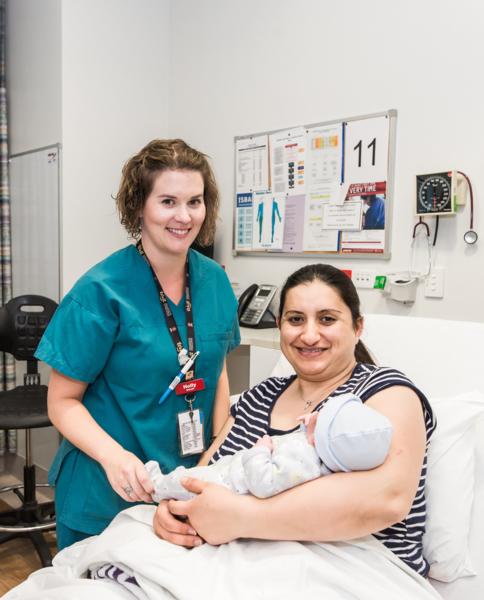DHB Employed Midwives Reject DHBs' Pay Offer – Strike Looms
More than 1100 District Health Board (DHB) employed midwives have voted overwhelmingly to reject the DHBs’ pay offer and to go on strike.
Members of MERAS, the midwives’ union, have been voting in all 20 DHBs. Eighty per cent of MERAS members employed by DHBs voted in the ballot that closed yesterday and of these, ninety per cent voted to reject the DHBs’ offer and for strike action.
Midwives will be giving notice from tomorrow of two-hour work stoppages every day on every shift over a two-week period (effective 22 November to 5 December).
Industrial Co-leader Jill Ovens says the idea is to maximise disruption for the DHBs while minimising the effect on women and their babies.
Ballot co-ordinators in every DHB reported that members were keen to vote. Says Victoria Christian, National Representatives Council (NRC) deputy chair, members couldn’t wait to vote. “You couldn’t get through a shift without people saying I want my ballot paper. I want to vote now.”
Michelle Archer, MERAS MECA negotiating team representative, says members are feeling very passionate about midwifery. “This is a pivotal time for midwifery. Members see it as ‘our time’ to be recognised.”
NRC Chair Kelly McConville says it is fantastic that so many members voted. She says that the strike vote reflected the concerns that midwives have about their working conditions and that they are not acknowledged in their scope pf practice. “It shows how we’ve been working at crisis point for a long time now.”
Jill Ovens says members rejected the offer because the DHBs are refusing to recognise midwives’ skills and responsibilities, a key claim for midwives since negotiations started more than a year ago.
Instead, midwives were offered the nurses’ pay scales, agreed as a result of a negotiation in which the bulk of midwives employed by DHBs and represented by MERAS, played no part.
“Midwives gained recognition as an autonomous profession in 1990, nearly 30 years ago,” says Jill Ovens. “They have a high level of responsibility, study for a four-year direct-entry degree, and their scope of practice includes a high level of clinical decision-making.”
The DHBs rejected the MERAS proposal for a further percentage to recognise the “midwives’ difference”. They also rejected a “retention allowance” to address the pressing midwifery shortage.
Jill Ovens says commitment and investment is required by DHBs and the Ministry of Health to recruit and retain midwives. “The DHBs and Ministry of Health know urgent action is needed to address the midwifery shortage and midwives’ work-related stress.”
-END-
Further facts:
DHB-employed midwives start work as fully competent practitioners on an annual salary of $49,449 after completing a 4-year (equivalent) degree.
Most core midwives earn up to $66,755 a year with few opportunities to progress to the senior midwives’ scale despite having prescribing rights and a high level of clinical decision-making.
The DHBs’ own Midwifery Workforce Information Report (September 2018) found that:
- There are fewer midwives working in DHBs, at the same time as the number of babies being born is increasing. Further, midwives have been faced with increased complexity and acuity.
- DHB midwives are largely part-time with midwives paid on average fewer than 30 hours a week.
- A sign of workplace stress is that DHB midwives have the highest rate of sick leave and higher turnover rates than most other health professions.
- Almost a third of DHB-employed midwives are over 55 and will be retiring within the next 10 years.
- There is a severe under-representation of Pacific, Maori and Asian midwives.
- Midwives have the alternative of working as Lead Maternity Carers (LMCs), which allows more autonomy and flexibility than working in a hospital setting.

